August 2021
August 11, 2021
“I thought the Kama Sutra was an Indian restaurant”
Smirnoff ran this ad in the 70s but reportedly pulled it after a few months when its market researchers surveyed customers and discovered that "60 per cent of them thought that the Kama Sutra was indeed an Indian restaurant."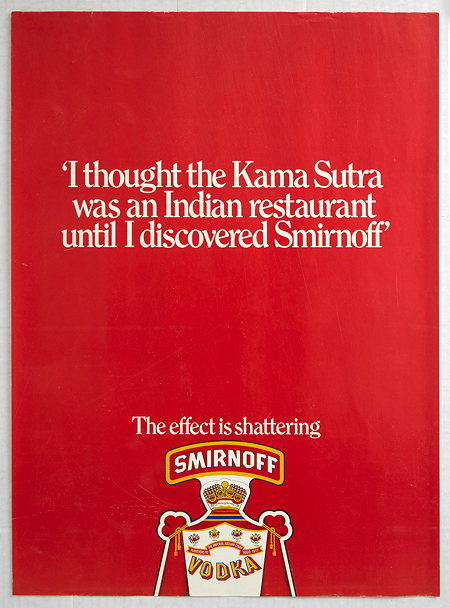
image source: codex
But according to Delia Chiaro in The Language of Jokes, the ad lived on in popular memory, inspiring a genre of "Smirnoff jokes".
I thought innuendo was an Italian suppository until I discovered Smirnoff.
I thought cirrhosis was a type of cloud until I discovered Smirnoff.
However it was not long before the graffitists began to abandon the formula, first by substituting the word Smirnoff with other items:
I thought Nausea was a novel by Jean-Paul Sartre until I discovered Scrumpy.
Soon, the caption began to move more radically away from the matrix, as more items were changed. In the next example there is no allusion to drink whatsoever:
I used to think I was an atheist until I discovered I was God.
Although Smirnoff jokes are now practically obsolete, the I thought A was B until I discovered C formula has now frozen into the English language as a semi-idiom. Today we can find graffiti (or indeed hear asides) such as:
I used to talk in cliches but now I avoid them like the plague
in which the original matrix is barely recognizable.
Below is another Smirnoff ad from the same series.

Posted By: Alex - Wed Aug 11, 2021 -
Comments (5)
Category: Inebriation and Intoxicants, Advertising, 1970s, Jokes
By the Light of the Silvery Moon
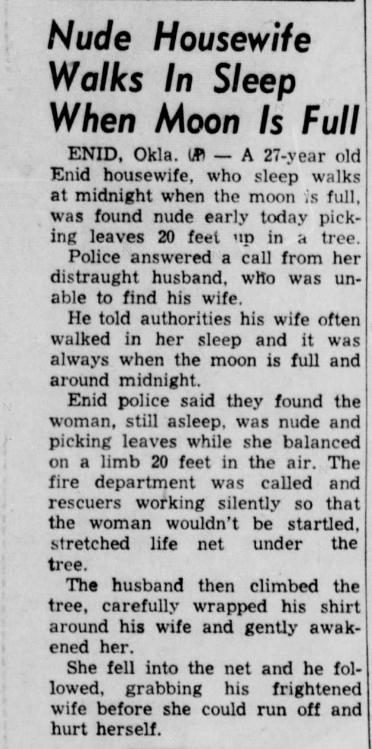
Source: The Escanaba Daily Press (Escanaba, Michigan) 30 Jun 1953, Tue Page 8
Posted By: Paul - Wed Aug 11, 2021 -
Comments (0)
Category: Public Humiliation, Sleep and Dreams, Public Indecency, 1950s
August 10, 2021
Car sold for 1395 bananas
1965: Bernice Wyszynski saw a brand-new Pontiac sedan advertised for "1,395 bananas". So she tried to take the dealer up on that offer. However, the dealer insisted that the car actually cost $1,395. 'Bananas', he said, was a vernacular term for dollars. Wyszynski threatened to sue him for false advertising, and eventually he relented, selling her the car in exchange for 1,395 bananas.I can buy five bananas at the supermarket for $1. Which means that, in present-day money, Wyszynski got the car for around $280. That's a pretty good deal.
Bernice Wyszynski died in 2003, and the banana incident made it into her obituary:

Long Beach Press-Telegram - May 5, 1965

Arizona Daily Star - May 1, 1965
Posted By: Alex - Tue Aug 10, 2021 -
Comments (8)
Category: Food, 1960s, Cars, Bananas
Round the World with Nellie Bly
Entry at Board Game Geek.Nellie Bly at Wikipedia.
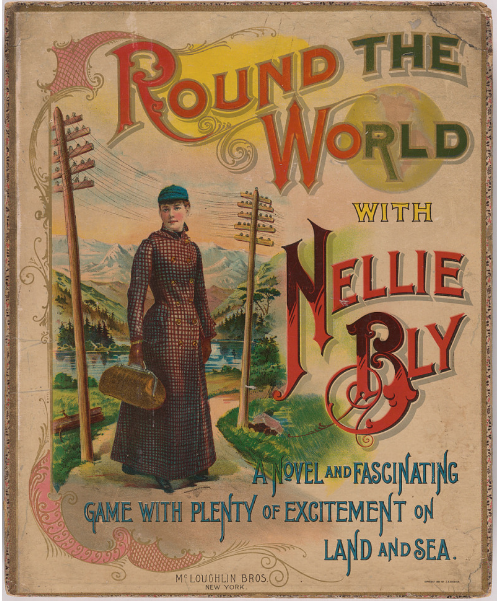
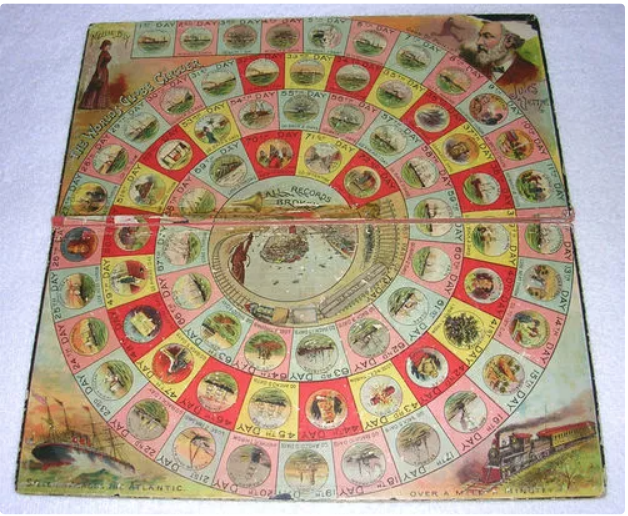
Posted By: Paul - Tue Aug 10, 2021 -
Comments (3)
Category: Celebrities, Games, Journalism, Travel, World Records, Writers
August 9, 2021
Double-Sided Cowboy Boots
From fashion label Hood by Air. Introduced in 2016. Not sure if it's still possible to buy them anywhere.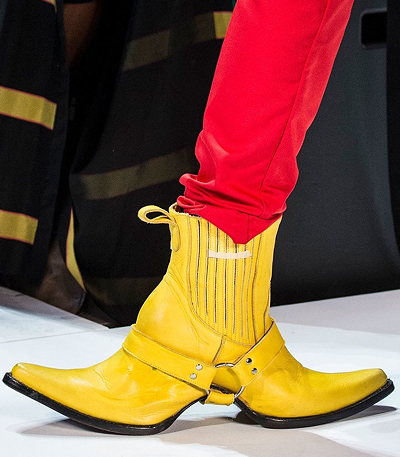
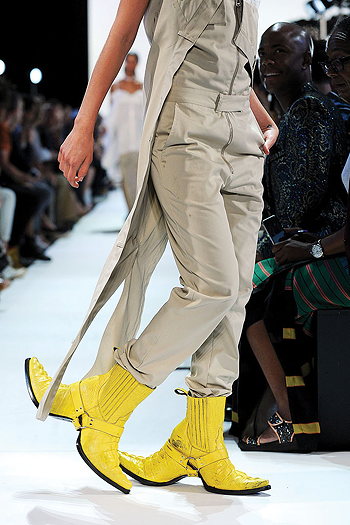
source: footwearnews.com
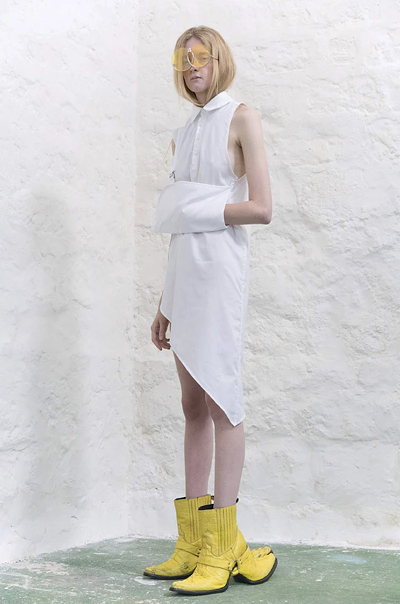
source: i-d.vice.com
Posted By: Alex - Mon Aug 09, 2021 -
Comments (6)
Category: Shoes
Double King
Posted By: Paul - Mon Aug 09, 2021 -
Comments (0)
Category: Royalty, Surrealism, Fantasy, Cartoons, Fictional Monsters
August 8, 2021
Madeleine Ravier’s Bicycle for Animals
Humans have invented mechanical devices, such as bicycles, that allow us to move faster by amplifying the power of our limbs. Madeleine Ravier of Paris argued that what works for people should also work for animals. So she invented and, in 1907, patented a "Cycles pour animaux," or 'bicycle for animals'.Her patent is in French, but the automatic translation is fairly comprehensible. Here's part of it.
Quite recently (less than 50 years ago), understanding the imperfection of his own limbs, he endowed them with mobile mechanisms, he put cycles, devices formed of 2 or 3 wheels between the legs. and of a few light and simple organs, with which he has prodigiously increased the extent of his movements without the help of external energy.
He thus achieved 370 kilometers in 12 hours (cyclist Cadolle), and even 45,764 kilometers (record of cyclist Bouhours), while excellent athletes, on their limbs, did not achieve, at most, at the same time of 12 hours than the already very high distances of 113 kilometers (walker 5o Hibbird) or ikh kilometers (rowell runner)....
What man did for himself he can do it for animals, or at least for some of them; There is a way to increase the efficiency of their limbs by the intercalation, between these limbs and the field of motion, of mechanical devices receiving the reciprocating motion of the limbs, transforming it into continuous rotary motion, and ending in rotating parts; and the result obtained can be used to make animals move man faster and farther than has hitherto been done by using them.
Ravier imagined making bicycles for all kinds of animals including "mules, donkeys, elephants, camels, dromedaries, etc.". But she started with a bicycle for horses, as shown below.

I have no idea if she ever built and tested one of these horse bicycles. The language barrier makes researching this a challenge.
Posted By: Alex - Sun Aug 08, 2021 -
Comments (5)
Category: Animals, Bicycles and Other Human-powered Vehicles, Inventions, Patents, 1900s
Bailey’s Comets
The Wikipedia page.
According to Mark Arnold's book, Think Pink! The Story of DePatie-Freling Productions, producing the show was a nightmare, due to the massive amount of characters. Not only did the series do extremely poorly in the ratings, it got so costly to produce it nearly broke the studio, curtailing production for that year.
Posted By: Paul - Sun Aug 08, 2021 -
Comments (2)
Category: Contests, Races and Other Competitions, Fads, Ineptness, Crudity, Talentlessness, Kitsch, and Bad Art, Sports, Cartoons, 1970s
August 7, 2021
Miss Mayonnaise and Miss Salad Dressing
June 1952: Joan Corbett was named 'Miss Mayonnaise' while her twin sister, Jean, was given the title of 'Miss Salad Dressing'.
Los Angeles Times - June 11, 1952

Pasadena Independent Sun - June 8, 1952
Here's a better picture of the twins.

And here they are in a 1954 ad for Chesterfield Cigarettes.

The Burbank High School 'In Memoriam' blog has some biographical info about them:
Posted By: Alex - Sat Aug 07, 2021 -
Comments (4)
Category: Awards, Prizes, Competitions and Contests, Mayonnaise, 1950s
Mystery Illustration 102
What type of publication is this dramatic illustration from? A true-crime magazine? A government report on urban violence? Publicity for a cop movie?The answer is here.
Or after the jump.
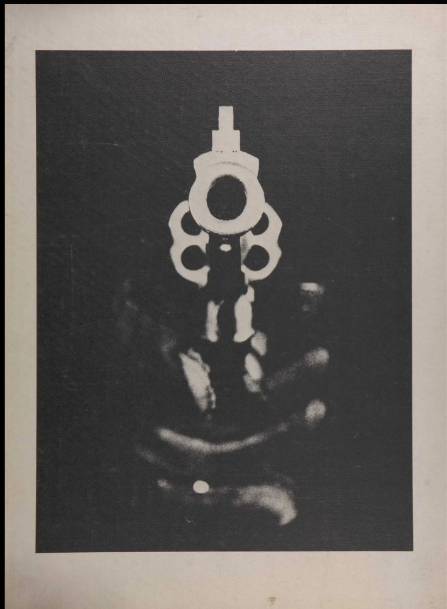
More in extended >>
Posted By: Paul - Sat Aug 07, 2021 -
Comments (3)
Category: Photography and Photographers, 1970s, Weapons
| Get WU Posts by Email | |
|---|---|

| Who We Are |
|---|
| Alex Boese Alex is the creator and curator of the Museum of Hoaxes. He's also the author of various weird, non-fiction books such as Elephants on Acid. Paul Di Filippo Paul has been paid to put weird ideas into fictional form for over thirty years, in his career as a noted science fiction writer. He has recently begun blogging on many curious topics with three fellow writers at The Inferior 4+1. Chuck Shepherd Chuck is the purveyor of News of the Weird, the syndicated column which for decades has set the gold-standard for reporting on oddities and the bizarre. Our banner was drawn by the legendary underground cartoonist Rick Altergott. Contact Us |

